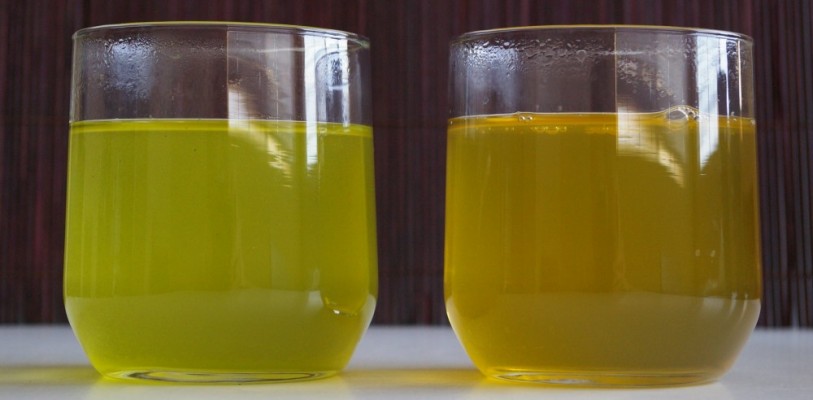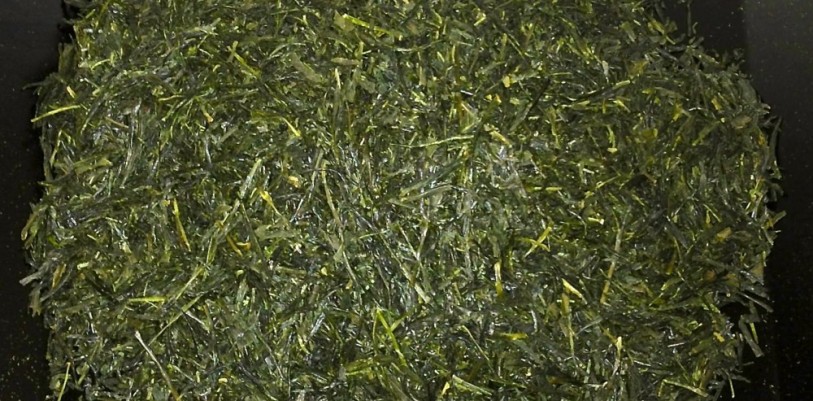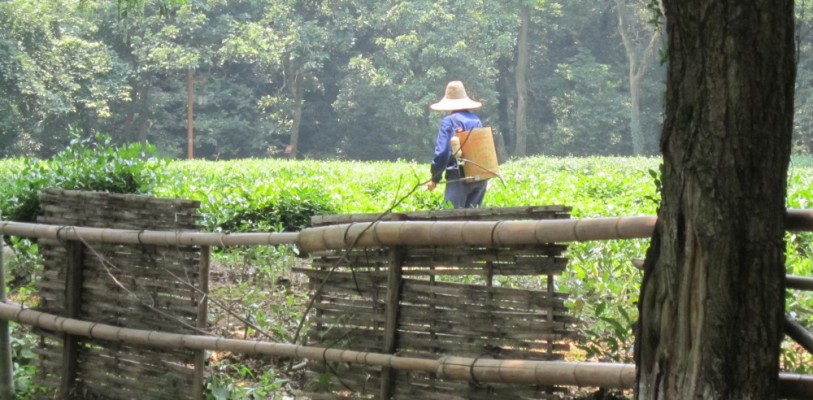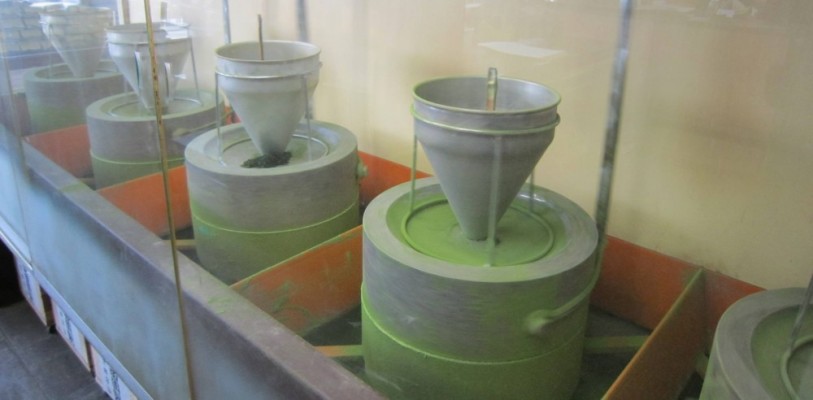
Green tea plants are actually camellia plants, where all tea originates. Camellia plants like hot and humid weather. When it has heat and humidity at a high altitude, the tea plant produces leaves with the most flavor.
Depending on growing conditions and processing, the leaves of the camellia plant end up as green tea, oolong tea, or black tea.
So, let’s talk about green tea. If you are a tea connoisseur, you’ll notice that green tea from China and green tea from Japan tastes different.
In Japan, the tea leaves are steamed before drying and aren’t roasted as long as in China, giving the tea a greener color. This is why the Japanese sometimes call it, nama-cha, which means raw tea.
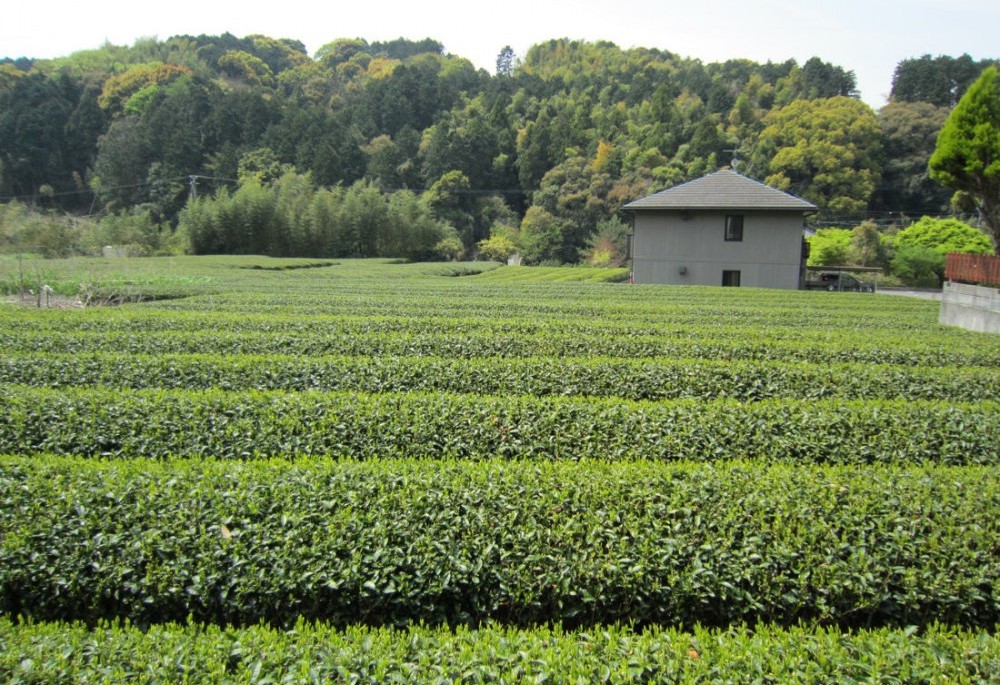 Green Tea Plants in Shizuoka, Japan
Green Tea Plants in Shizuoka, Japan
In Japan, there are two methods of tea cultivation.
The tea plants receive direct sunlight. This method is used in China and Japan.
Shizuoka prefecture is one of the sunniest and warmest places in Japan, so it is the perfect place for this method. This type of tea farming produces tea leaves for Sencha.
Sencha can be harvested three times a year and the leaves are usually cut with a machine. The first flush of leaves, which are called Shincha are harvested from mid-April to mid-May.
The tea plants are partially covered.
When the new leaves start to bud, reeds or straw are used to cover the green tea plants. The leaves are covered around the middle of April, and only receive around 5-10% of sunlight. This method is popular in Uji in Kyoto prefecture, because there is a lot of rainfall.
The shading increases the amount of chlorophyll and gives the leaves a really bright green color. This method produces tea leaves for Gyokuro, Tencha (the leaves that eventually become Matcha), and Kabusecha.
Tencha and gyokuro are covered 20 days before harvesting, which blocks 95% of the sunlight. Kabusecha is covered 10 days before harvesting, which blocks 90% of the sunlight.
The leaves are harvested from mid-April to mid-May. These leaves are picked by hand because they are soft. They are only harvested once a year making them more expensive.
After the tea leaves are cut, they are immediately sent to a processing plant where they are steamed. The steaming stops fermentation and retains the green color. After steaming, the leaves are blow-dried with a whirling machine.
Sencha and gyokuro are harvested differently, but the processing is similar.
The steamed leaves are rolled many times and dried. Then, they are examined for appearance, flavor, aroma, and color. Finally, they are sorted and blended to make the final product.
The raw leaves (from the second method) are put in a drying oven. Then, the leaves are put into wooden boxes and refrigerated until they are ready to be processed into matcha.
The tencha leaves are cut into a uniform size. The stems are removed until all that is left is the leaf. The leaves are dried and then ground by a stone mill into a fine powder.
I learned about the harvesting of green tea plants on a tour of the Marukyu-Koyamaen processing plant in Kyoto. Their website has additional information about the harvesting and processing of green tea and matcha.
This article contains a link to DailyMatcha.com. Daily Matcha is our store where we sell green tea directly from Japan. Your purchases at Daily Matcha support our effort to keep this website free and to spread the word about green tea. Thank you!
